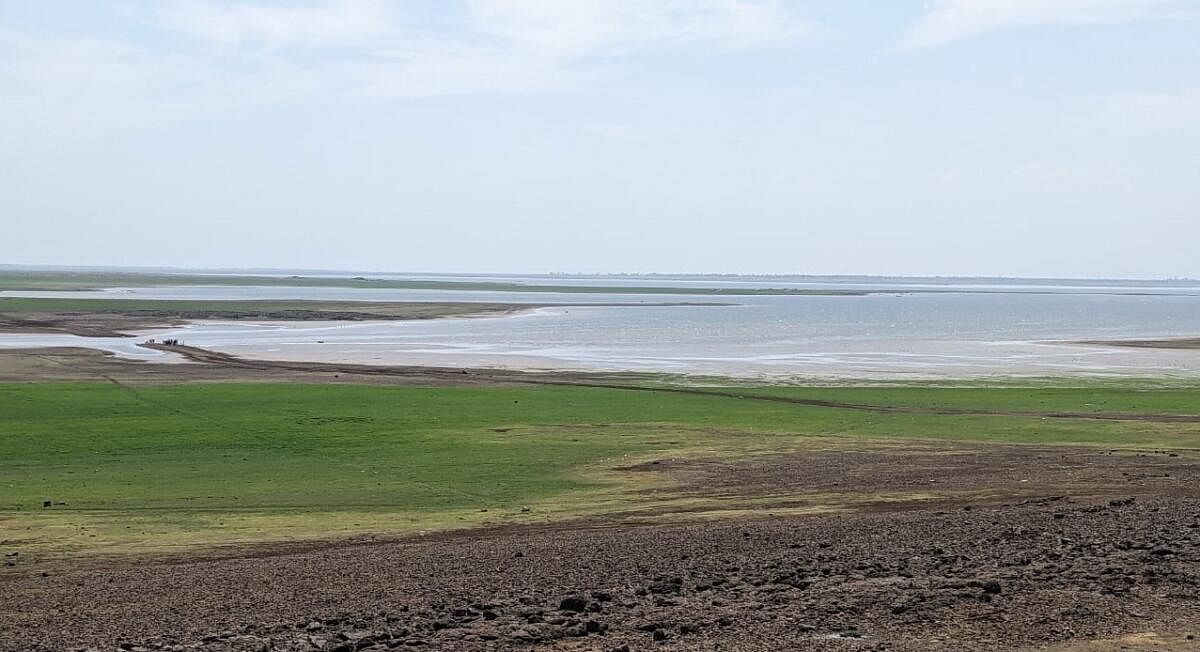
Twenty-two reservoirs in Karnataka are currently holding less water compared with last year, leading to shortage of drinking water from Manipal to Hubballi-Dharwad and sparking concerns among people since there is still time for the monsoon.
The acute shortage in reservoirs is a bitter pill as a prolonged rainy season drenched vast parts of the state till December last year.
Karnataka’s 22 reservoirs can store 860.27 tmc ft of water. As on May 19, they held only 167.42 tmc ft of water in them, of which only 79.30 tmc ft is live storage (water that is available for utilisation).
The mid-May storage level is nearly 53.57 tmc ft less than the previous year. On May 19, 2022, the reservoirs had 220.99 tmc ft of water.
The storage level of Tungabhadra Reservoir near Hosapete is the lowest, with the dam having only 3.6% of its total water storage as on May 19.
According to the Karnataka Water Resource Department's website, TB Reservoir has a gross storage capacity of 105.78 tmc ft of water. But currently, it is holding just 3.722 tmc ft of water and 31.5 tmc ft of silt, resulting in reduced storage capacity.
The culprits behind the silt accumulation are said to be mining and deforestation.
Reduced storage at the dam has meant that parts of Hosapete and Ballari cities receive drinking water once in 10 days.
“We had filled all the tanks and water bodies in the region during the monsoon and this will help us tide over summer. Ballari and Hosapete are facing a water crisis due to lack of proper storage and unplanned water supply system,” said Basappa Jankar, TB Dam Assistant Executive Engineer.
Of the 11 major reservoirs in the state, which include Almatti, Tungabhadra, Bhadra, Hidkal, Malaprabha, Narayanpur, K R S, Hemavathy, Kabini and Harangi, seven of them have water levels in single digits.
For example, though the Narayanpur reservoir has 16.06 tmc ft of water (48% of its gross storage capacity), the water available for consumption is just 1.3 tmc ft.
Similarly, Almatti Reservoir, the largest in Karnataka, has only 6.2 tmc ft of water in live storage. Of the total 123.08 tmc ft of gross storage capacity, Almatti currently has 23.8 tmc ft of water.
While officials claim that Karnataka may not face drinking water scarcity this year, several cities and rural areas are reeling under the problem.
Take Belagavi and the twin cities of Hubballi-Dharwad.
Though Hidkal and Renukasagara Reservoirs in Savadatti, which supply drinking water to the respective cities, have sufficient water, residents are getting water once a week. L&T, which has been tasked to provide 24X7 drinking water supply, is finding it difficult to streamline it.
In Udupi, authorities have decided to distribute drinking water once in three days from May 19, prompting several educational institutes with hostels and residential facilities to announce holidays.
Sources in Manipal Academy of Higher Education, Manipal, told DH that they have asked students staying in hostels to rationalise water.
“Corporation water is the main source of water supply to campus and it has been erratic,” said sources.
Water Resource Department Additional Chief Secretary Rakesh Singh said compared to last year, the Irrigation Consultative Committees (ICC) of respective rivers had decided to release water for crops for a longer period, which could be one reason for the low water levels.
But he added that “Karnataka will not face a shortage of drinking water this year”.
(With inputs from Manjushree G Naik from Udupi)